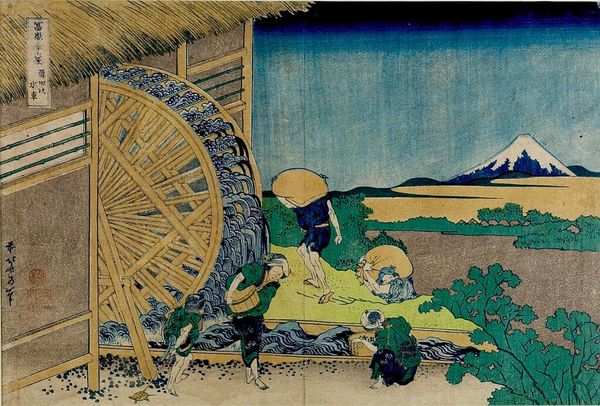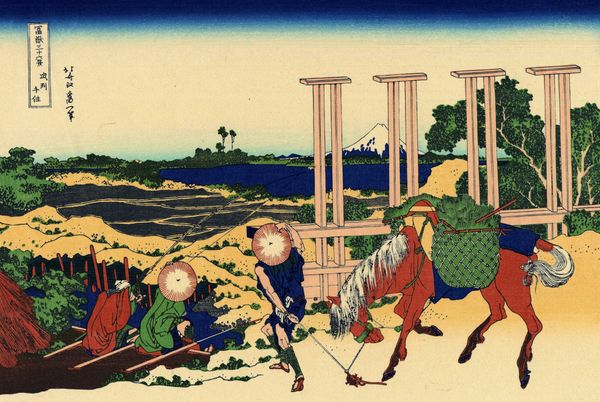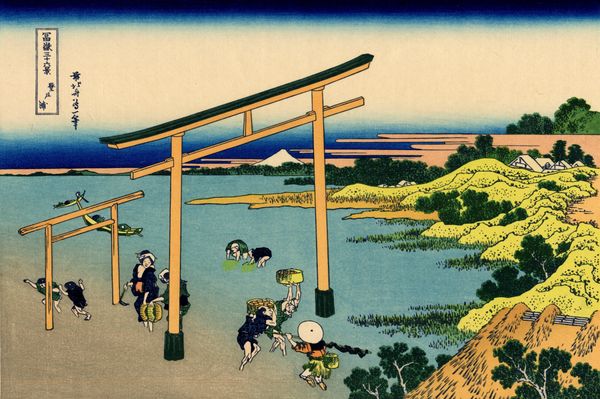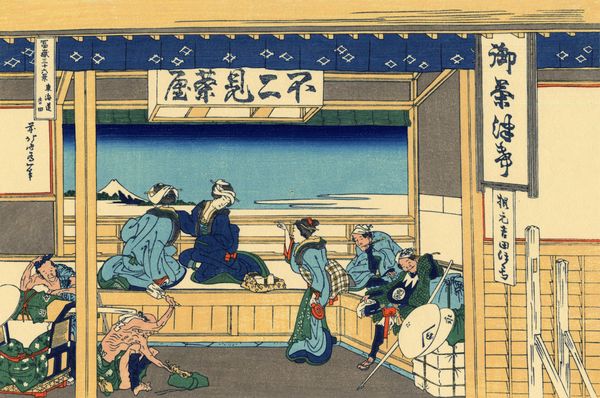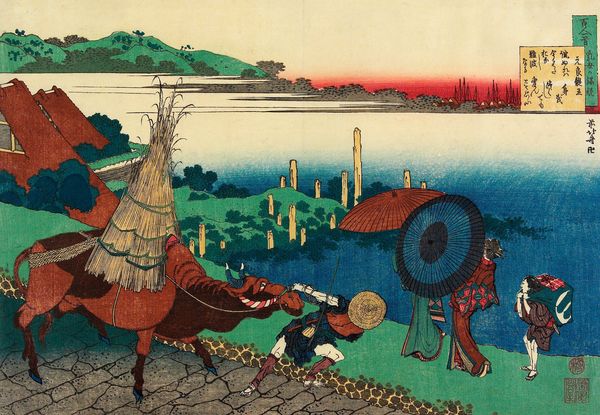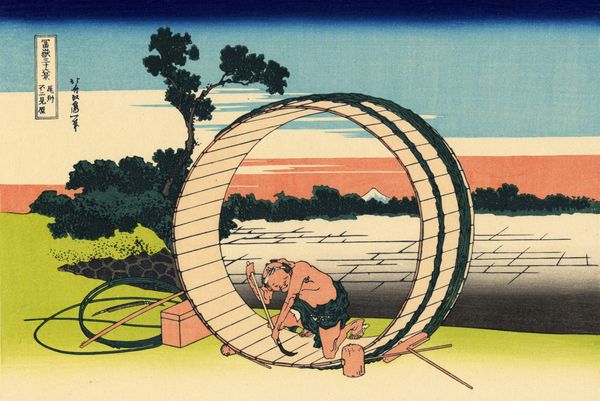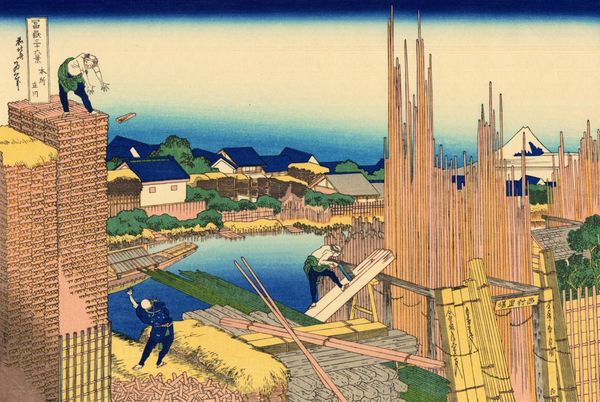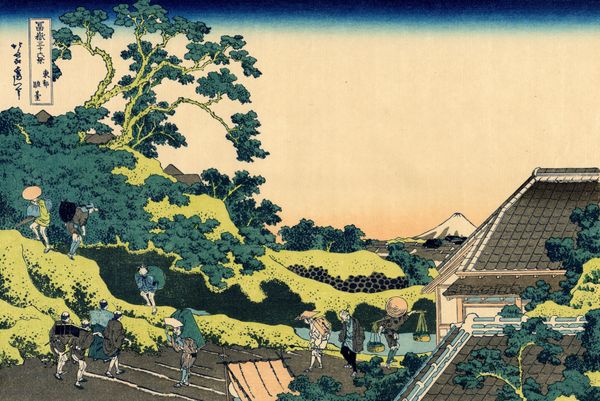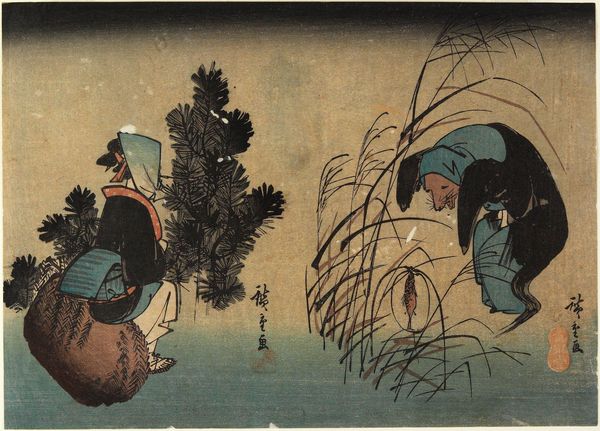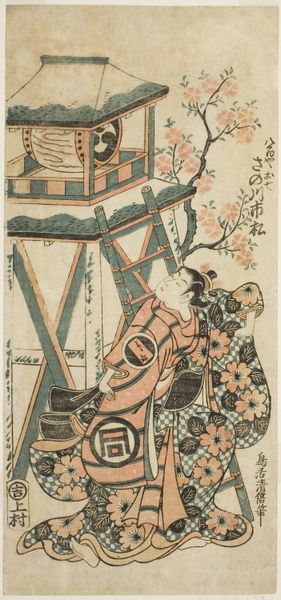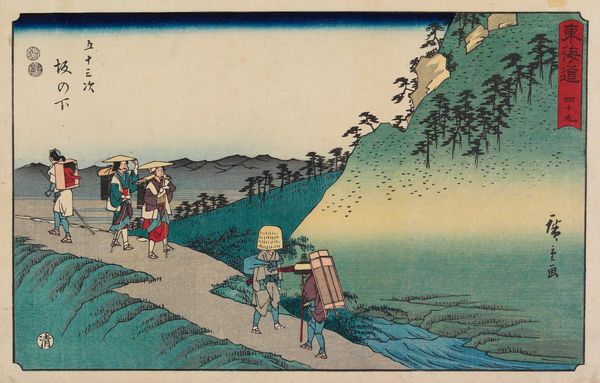
woodblock-print
#
asian-art
#
landscape
#
ukiyo-e
#
woodblock-print
Copyright: Public domain
Curator: Before us, we see Katsushika Hokusai's woodblock print "Watermill at Onden." Editor: My first impression is the calmness amidst labor, the stillness of Fuji-san juxtaposed with the movement implied by the watermill and active figures. There is a subtle discordance here. Curator: The presence of Mount Fuji certainly creates that feeling of serenity. As a recurring motif in Hokusai's work, it could represent stability or even a divine presence watching over the scene. Editor: It's more than just the composition, I think, it’s how the artist is using line here. The crisp, assured lines outlining the wooden structure speak to a developed tradition of woodworking and printmaking practices. The skill inherent in cutting those lines is undeniable. Curator: Yes, ukiyo-e prints relied heavily on skilled artisans. Beyond craft, the watermill itself is laden with meaning. It symbolizes the cyclical nature of life, the flow of time, but also hard work and self-sufficiency. It reminds us how interdependent were people and the resources of their physical landscape in Edo society. Editor: Absolutely, and look at the people! They seem almost stoic, each bearing their burden. There is an intense engagement between this labor and the constructed environment, especially apparent by that wheel. Its spokes create a strong pattern, one designed around specific human use. Curator: The postures convey respect, both to the mountain and the land providing their livelihoods. Notice how each of these repeated symbols of respect and acknowledgement of place can still resonate through centuries? It's about a human effort toward resilience in times of social transition. Editor: Thinking of how each print was made, and of what, and for whom: This wasn't rarefied fine art in its own time. These were made from readily available materials for mass consumption. Knowing this gives new dimensions to how we encounter the work, or understand its original functions. Curator: It’s compelling to trace these social values in relation to how the imagery creates meaning across cultures and throughout different periods. Editor: Yes, seeing art as product transforms how we understand its symbolic properties. Thank you for unraveling more layers of symbolic meanings, I now consider labor and how things get made.
Comments
No comments
Be the first to comment and join the conversation on the ultimate creative platform.
